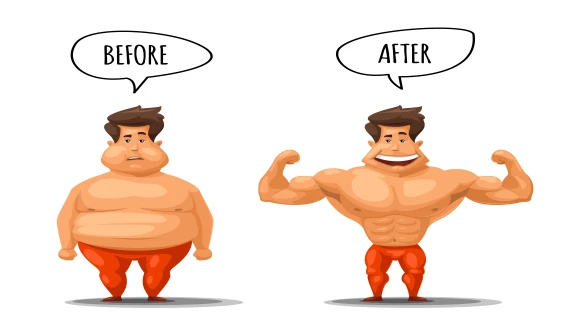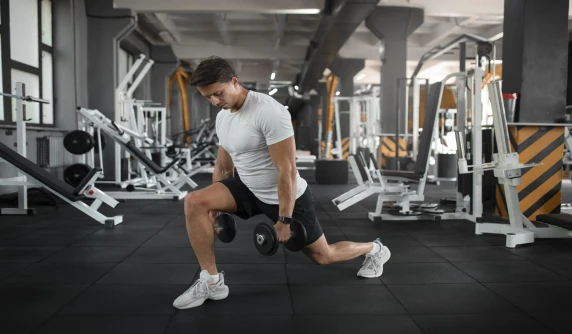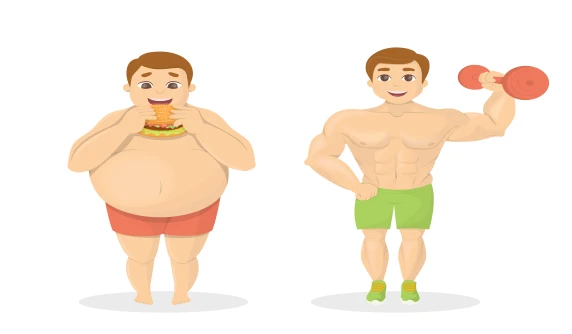
A key component of maintaining your health and vigor is aerobic exercise . You could be unsure of what kind of aerobic exercise to choose if you're new to exercising or if a medical condition or injury is requiring you to modify your exercise schedule.
Walking and cycling are two of the most common forms of physical exercise . Both can be modified for novices as well as those with illnesses or injuries.
When compared to other aerobic activities like running or jumping rope, they both offer a reduced impact alternative. Furthermore, you can perform them indoors or outdoors, so you can do them in any weather.
On the other hand, their prices usually vary. While walking only requires a pair of shoes (or not) and the motivation to move, cycling obviously requires a bike.
You could still be wondering which exercise is healthier and more beneficial to your body.
Which burns more calories?
Walking and cycling burn different amounts of calories depending on how hard you work out. The number of calories that a person weighing 150 pounds (68 kg) would burn in a 30-minute exercise is approximated in the following table.
| Intensity | Biking (calories and speed) | Walking (calories and speed) |
|---|---|---|
| Light | 240 calories — 10–11.9 miles per hour (16–19.15 km/hr) | 154 calories — 3.5 miles per hour (5.6 km/hr) |
| Moderate | 285 calories — 12–13.9 miles per hour (19.3–22.4 km/hr) | 179 calories — 4.0 miles per hour (6.4 km/hr) |
| High | 357 calories — 14–15.9 miles per hour (22.5–25.6 km/hr) | 250 calories — 4.5 miles per hour (7.2 km/hr) |
As a result, cycling tends to burn more calories in the same amount of time with the same effort. The rate of perceived exertion can be used to conceptualize the intensity.
Cycling might be a better alternative if you're short on time and want to burn calories.
Compared to walking, cycling burns more calories at the same time and intensity.
Which works muscles better?
Many of the muscles used in walking and cycling are used to generate force in order to move. Walking and cycling both utilize the gluteal muscles of the hip and hamstrings, which are involved in power production.
When cycling at a faster pace, especially when standing up to cycle, these muscles become more activated. Additionally, walking up stairs or hills causes an increase in gluteal activity.
When cycling as opposed to walking, more of the quadriceps (knee extensors) are used. When cycling while seated, they exert more force during the power or push-down phase.
Lastly, the soleus and gastrocnemius muscles of the calf are crucial for walking and riding. The push phase of cycling and the push-off phase of walking (from mid-stance to pre-swing phases) are powered by these muscles.
As a result, the muscles used in both activities are the same, yet cycling often involves greater muscle force.
Walking and cycling also require the use of many of the muscles required to generate force and movement. But riding a bike tends to put more strain on your muscles.
Which burns more fat?
Walking was found to boost fat metabolism more than cycling when studies evaluating the effects of cycling and walking on fat metabolism were conducted. The participants engaged in both types of exercise at the same level of perceived effort or intensity.
In contrast to cycling, weight-bearing activities like walking and running were linked to decreased amounts of a type of fat that builds up in the bone marrow, according to another study.
Cycling burns less fat than walking does. This might be the case because, in contrast to cycling, it is seen as a weight-bearing sport.
Which builds more strength?
Cycling was linked to greater strength in a study on muscle hypertrophy and strength.
Cycling boosted strength and muscle hypertrophy, according to one study. Compared to younger persons, older adults experienced a stronger influence. Younger individuals may, however, accomplish this with greater intensity.
Studies on whether and how walking improves strength in younger, health y persons don't seem to be very numerous.
One study did find, however, that elderly sedentary people who started walking had greater strength.
It's possible that younger people need to pedal harder to achieve the same results.
Compared to walking, cycling might help you acquire more strength. But more investigation is required.
Increasing your daily calorie expenditure in relation to your calorie intake is the key to losing weight. Increasing your activity level while judiciously reducing your caloric intake is one of the key ways to achieve this.
Walking tends to burn fewer calories per unit of time than cycling, as the table above illustrates.
Therefore, if you want to reduce weight but don't have a lot of time for exercise , cycling can be a better option.
However, the best course of action is to limit your caloric intake and engage in the activity you find more enjoyable. Walking, cycling, or a mix of the two can be your workout. You may improve diversity and your likelihood of sticking with a program by doing both.
If you're on a tight schedule for exercise , cycling can be a better option for losing weight. However, if you watch what you eat, either kind of activity can aid in weight loss.
Which is better for those with injuries?
A normal aspect of life is getting hurt. They can be crippling and interfere with your ability to exercise . It's critical to choose an activity that allows you to continue being active even after an injury. That can, nevertheless, vary depending on the harm.
For example, a research found that low back pain in bikers was common. Road cycling requires extended amounts of time spent with the trunk flexed.
Walking, however, has been shown in a recent study of individuals with persistent low back pain to lessen pain, impairment, and activity avoidance.
Research has indicated that walking and cycling are two effective ways for people to treat osteoarthritis discomfort in the knee. Thus, for joint pain brought on by arthritis, both can be beneficial activities to engage in.
You may find that one activity is more comfortable than another, though, if you have additional reasons for your joint pain.
Cycling might be a more bearable form of exercise if weight-bearing exercise s, like walking, cause you discomfort. Walking, however, can be a better option if you discover that cycling's hunched position is more uncomfortable.
If you have any health issues or injuries and would like to start walking or cycling, see a health care provider, such as your family doctor. They will assist you in selecting the workout that best fits your requirements.
If you have injuries, low impact exercise s like walking and cycling are good for you. Pick the option that feels the best for whatever injuries you may have, though.
Who benefits from each? Who should avoid each?
Cycling a bike usually helps those who:
-
Have less time to exercise
-
Enjoy a faster pace
For instance, walking at a moderate pace tends to burn fewer calories than moderate cycling. Cycling also gives you the opportunity to strengthen your lower body.
But, you might want to avoid cycling if you find it unpleasant or uncomfortable because of back problems, or even if you feel uncomfortable sitting for extended periods of time.
It is advantageous to walk if you have:
-
Bone density issues, such as osteoporosis
-
Back pain
-
Little money to spend on a bike and associated accessories
Walking might not be the best option for every kind of discomfort, though. If you have discomfort that worsens while you are upright or in a weight-bearing position, you could discover that cycling is more comfortable for you.
Riding a bicycle can help you burn more calories and strengthen your lower body. Walking, on the other hand, is generally less expensive than cycling and may benefit bone density.
How to choose
Compared to other types of exercise , walking and cycling offer a more low-impact and effective workout.
If you're unsure which to pick, think about trying both and determining which is most pleasurable and comfortable for you. It might be beneficial for you to rent or borrow a bike even if you don't own one just to experience how it feels.
And which is the simplest to carry out? That is contingent upon your particular circumstances. It's likely that you can stroll around most places, including stores and your own home.
Cycling a bike can be very convenient if it eliminates the need for you to drive to work. However, it can be less convenient if you have to use a car or public transportation to get to a site where you can ride a bike.
Think about what you can include into your current routine the simplest.
Lastly, do you have any pals who ride bikes or walk? You may find it easier to maintain an exercise regimen if you workout with others.
Choose an activity based on what you enjoy doing, what you can fit into your schedule the quickest, and if you can walk or ride a bike with someone who can encourage you to get going.
In summary
Walking and cycling are great ways to get exercise . Anyone can enjoy and find them tough, regardless of experience level.
Both burn calories and serve as excellent substitute exercise s in the event of a medical ailment or injury sustained from another sport or kind of exercise .
If you want to improve your muscle or burn more calories when exercising but have less time, cycling can be beneficial for you.
If you believe you might benefit from weight-bearing exercise but cannot or will not afford to buy a bicycle and associated equipment, walking might be a better option.
The good news is that you can benefit from either form of exercise since it's excellent for your health.





